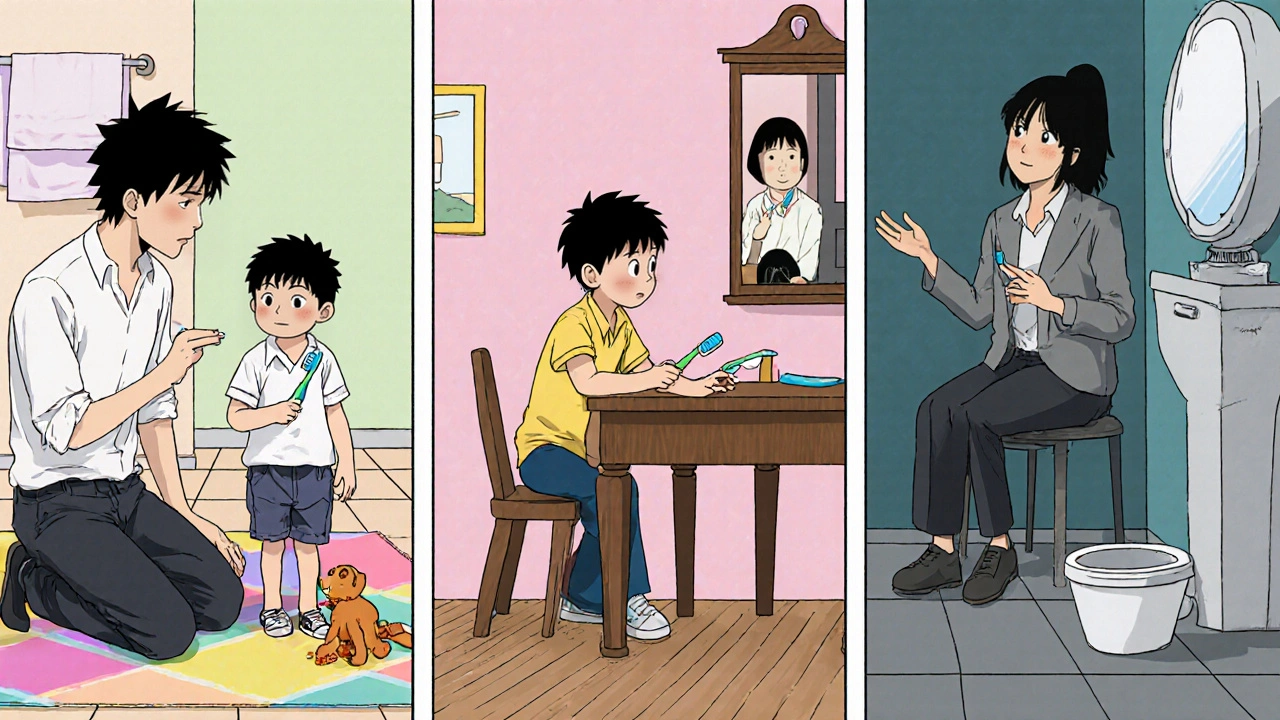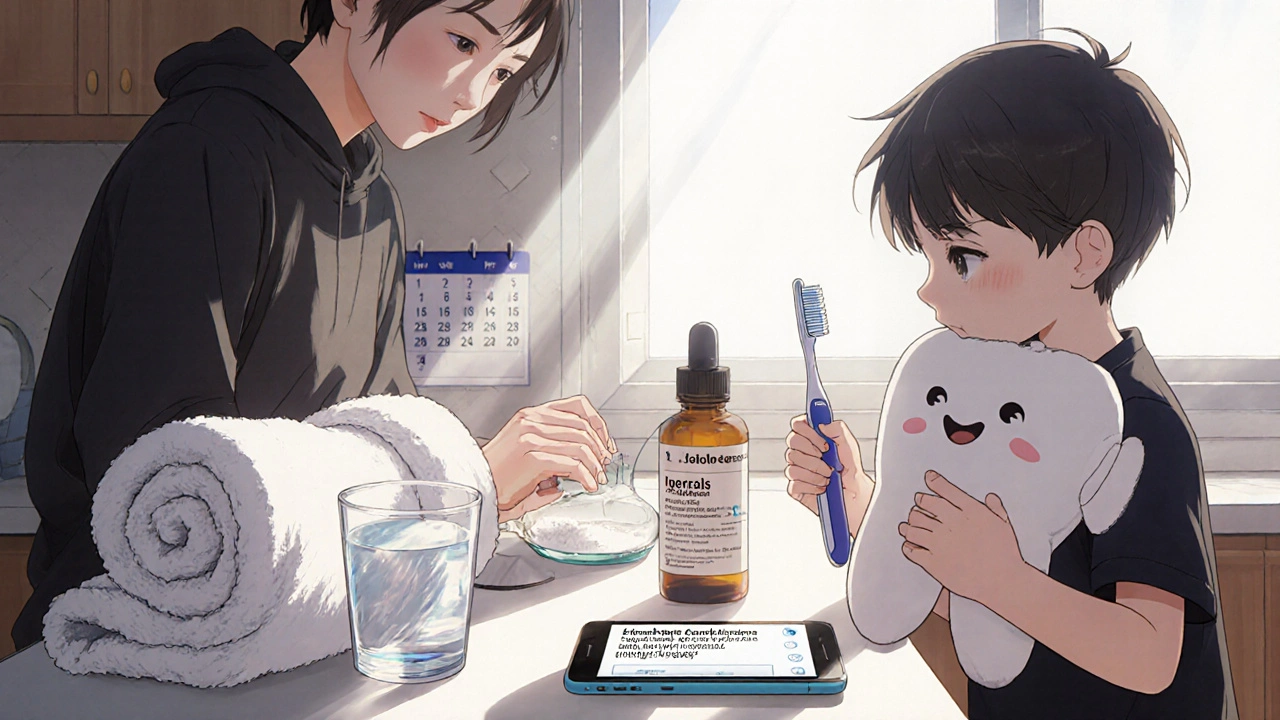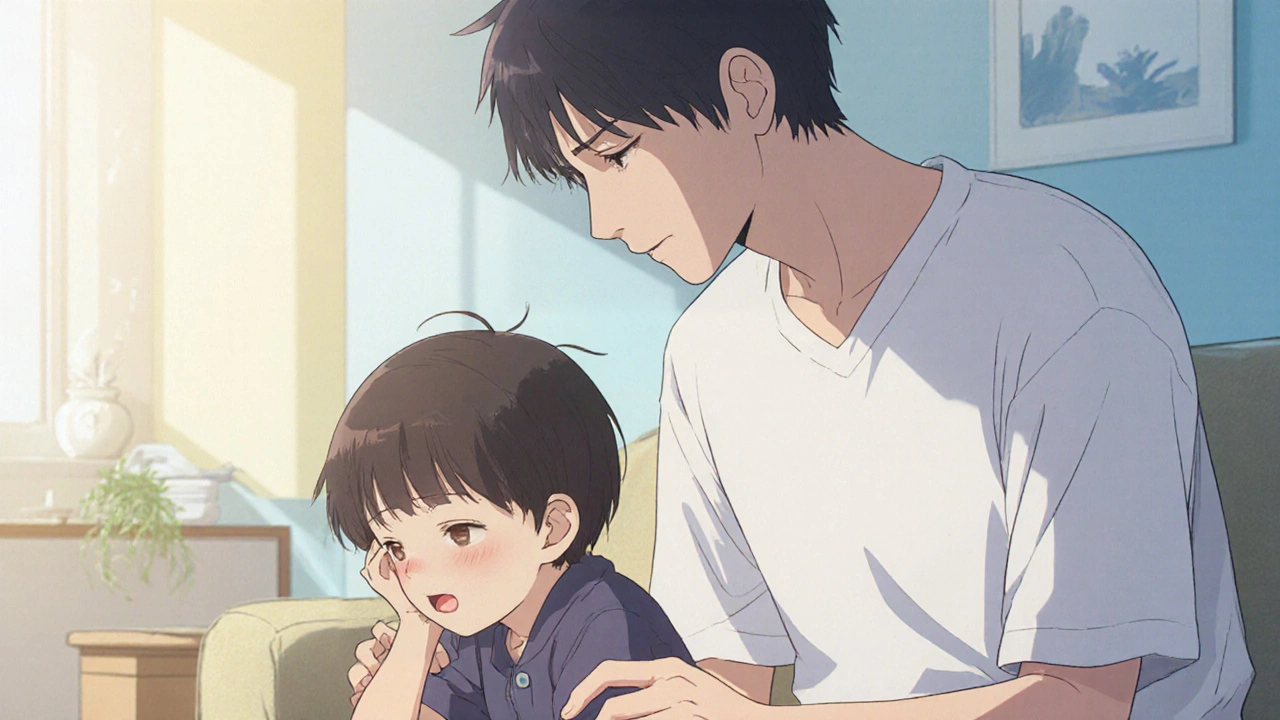Toothache Emergency Checker
Is This an Emergency?
Check your child's symptoms to determine if immediate dental attention is needed.
When your child winces, clutches a cheek, or refuses to eat, you know a toothache has struck. But instead of rushing straight to the medicine cabinet, the first step is a calm, clear conversation. Below is a step‑by‑step guide that turns a painful moment into an opportunity to teach, soothe, and empower.
Why Toothaches Matter for Kids
Unlike an adult’s aching molar, a child’s tooth pain can signal an infection, a broken tooth, or early childhood cavities-known as Dental caries. If left unchecked, these issues can affect speech development, self‑esteem, and even school performance. Early detection and honest communication keep the problem from snowballing.
Understanding What Kids Actually Feel
Children often describe tooth pain in vague terms: “It hurts,” or “My mouth feels funny.” Their ability to pinpoint the exact location or cause varies with age. A 4‑year‑old may not differentiate between a sore tooth and a sore gum, while a teenager can articulate a sharp, throbbing sensation. Knowing these developmental stages helps you tailor your response and avoid minimizing their experience.
Preparing the Conversation
Before you sit down, gather three pieces of information:
- Symptoms checklist - Note when the pain started, what triggers it (cold, sweet foods), and any visible signs such as swelling.
- Comfort tools - Have a soft toothbrush, dental floss, and a cold compress ready.
- Resources - Locate a nearby Pediatric dentist with emergency hours. In Melbourne, many clinics offer same‑day appointments for urgent pain.
Having facts in hand shows your child you’re taking the issue seriously and reduces their anxiety.
Age‑Specific Talk Tips
Use language that matches your child’s cognitive level. The table below outlines key phrases and explanations for three age groups.
| Age | Key Message | Example Phrase |
|---|---|---|
| 2‑4 years | Identify the feeling, reassure safety | "I see your cheek is sore. We’ll look at it together and make it feel better." |
| 5‑9 years | Explain cause and simple care steps | "Sometimes sugar makes little holes in teeth. Brushing helps stop that, and the dentist can fix it." |
| 10‑14 years | Discuss responsibility and treatment options | "If the pain keeps coming, we’ll need a dentist to see if a filling or a root canal is needed. You can help by flossing daily." |
Notice the shift from reassurance to shared responsibility as kids grow older. This approach respects their developing need for autonomy.
Answering Common Questions
Children often ask “Why does this hurt?” or “Will it get worse?” Here’s how to respond without overwhelming them:
- Why does it hurt? “Your tooth has a tiny crack or a bubble of acid that hurts the nerves inside. The dentist can fix that."
- Will it get worse? “If we take care of it now, it’s less likely to get worse. That’s why we’re talking about it.”
- Does it mean I need a filling? “Sometimes we need a tiny filling, like a puzzle piece, to stop the hole from getting bigger.”
Keep answers short, factual, and hopeful. Avoid saying things like “It’s nothing” because that can invalidate their experience and breed mistrust.

When to See a Dentist
Not every toothache requires an emergency visit, but certain red flags merit prompt action:
- Fever above 38°C (100.4°F)
- Swelling that spreads to the jaw or face
- Persistent throbbing for more than 24 hours
- Visible pus or a broken tooth fragment
If any of these appear, call your pediatric dentist right away. Many clinics in Melbourne accept same‑day referrals for children in pain.
Managing Pain at Home
While you’re setting up the dentist appointment, these safe home measures can keep discomfort manageable:
- Cold compress - Apply a clean cloth soaked in cool water for 10‑15 minutes. The cold numbs the area and reduces swelling.
- Saltwater rinse - Mix ½ teaspoon of salt in a cup of warm water. Let your child swish gently; this can soothe inflamed gums.
- Over‑the‑counter pain relief - ibuprofen (200‑400 mg for children) or paracetamol, according to weight guidelines, can be given every 6‑8 hours. Always follow dosage instructions.
- Avoid triggers - Skip sugary drinks, very hot or cold foods until the dentist sees the tooth.
These steps are part of an Pain management plan you can discuss with the dentist.
Putting It All Together - A Quick Checklist
- Observe symptoms and note triggers.
- Gather comfort tools (cold compress, saltwater).
- Use age‑appropriate language to explain the situation.
- Answer the child’s questions honestly.
- Check for red‑flag signs; call a dentist if needed.
- Apply home pain‑relief methods safely.
- Follow up with the dentist for definitive treatment.
By following this routine, you turn a painful episode into a teachable moment about health, responsibility, and self‑advocacy.
How can I tell if my child’s toothache is an emergency?
Watch for fever, facial swelling, constant throbbing, or visible pus. Any of these signs mean you should see a dentist right away.

What language works best for a 6‑year‑old?
Use simple terms: “Your tooth has a tiny hole that hurts. Brushing helps stop it, and the dentist can fix the hole.” Add reassurance that you’ll help them feel better.
Can I give my child ibuprofen for a toothache?
Yes, ibuprofen is safe for children when dosed by weight. Give 200‑400 mg every 6‑8 hours, but double‑check the label and your pediatrician’s advice.
How often should my child brush to prevent toothaches?
Twice a day with fluoride toothpaste. After meals, a quick rinse or brushing helps keep sugar‑produced acid away from teeth.
What should I do if my child refuses to eat because of tooth pain?
Offer soft, cool foods like yogurt, mashed potatoes, or smoothies. Avoid hot, crunchy, or sugary items until the dentist sees the tooth.


Eli Soler Caralt
October 21 2025Ah, the humble dentine’s lament-an echo of childhood’s fleeting comforts, yet a clarion call for vigilant guardianship. 🌟 One must cradle the tiny tooth like a fragile relic, lest the abyss of decay claim it. In the grand theatre of parental duty, every ache is a line in the script of future smiles. 🦷